The flu is caused by a virus. Viruses are generally passed from person to person through the air when an infected person sneezes or coughs.
But the virus can also live for a short time on objects like doorknobs, pens, pencils, keyboards, phones, and cups or eating utensils. So you can also get the flu by touching something that has been recently handled by someone infected with the virus and then touching your own mouth, nose, or eyes.
Each person may experience symptoms differently. The flu is called a respiratory disease, but it can affect your entire body. People usually become very sick with several, or all, of the following symptoms:
Cough, often becoming severe
Extreme exhaustion
Fatigue for several weeks
Headache
High fever
Runny or stuffy nose
Severe aches and pains
Sneezing at times
Sometimes a sore throat
Vomiting and diarrhea
Fever and body aches usually last for 3 to 5 days, but cough and fatigue may last for 2 weeks or more.
The symptoms of the flu may look like other medical problems. Always talk your healthcare provider for a diagnosis.
The flu is diagnosed based on your symptoms. Lab tests may be used to confirm the diagnosis, if necessary.
Specific treatment for the flu will be determined by your healthcare provider based on:
Your age, overall health, and medical history
Extent and type of flu, and severity of symptoms
How long you’ve had symptoms
Your tolerance for specific medicines, procedures, or therapies
Expectations for the course of the disease
Your opinion or preference
The goal of treatment for the flu is to help prevent or decrease the severity of symptoms. Treatment may include:
Antiviral medicines.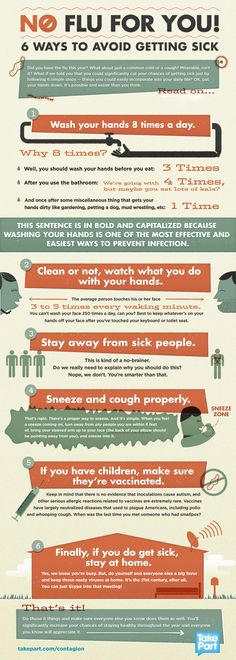 They can reduce how long you’ll have the flu, but they can’t cure it. They have to be started within the first 2 days of the illness. These medicines do have some side effects, such as nervousness, lightheadedness, or nausea. These medicines are prescribed by a doctor.
They can reduce how long you’ll have the flu, but they can’t cure it. They have to be started within the first 2 days of the illness. These medicines do have some side effects, such as nervousness, lightheadedness, or nausea. These medicines are prescribed by a doctor.
Medicines. There are medicines for congestion and nasal discharge. You can also take medicine to relieve aches and fever. Do not give aspirin to children with fever. The drug of choice for children is acetaminophen.
Rest. Bed rest and increased intake of fluids.
Talk with your healthcare provider for more information.
The most common complication of the flu is pneumonia. It can also cause serious muscle and central nervous system complications. Of those who get the flu, between 3,000 and 49,000 will die from it or from complications.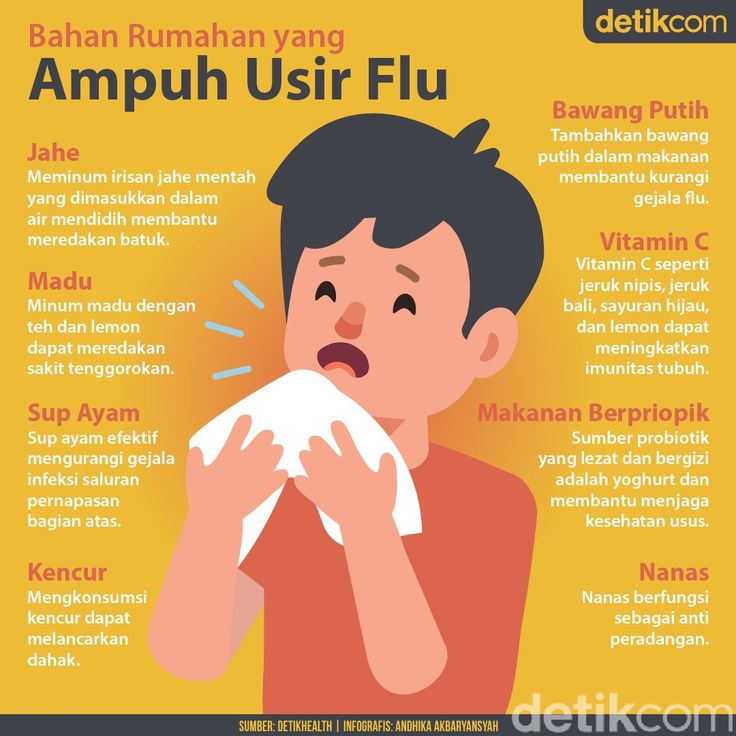 Most of these deaths happen in people ages 65 and older.
Most of these deaths happen in people ages 65 and older.
A new flu vaccine is made each fall. Everyone ages 6 months and older should get a flu shot each year. It is usually recommended for specific groups of people, as well as for anyone who wants to avoid having the flu.
The flu shot is safe. The CDC and the FDA closely watch vaccine safety. Hundreds of millions of flu vaccines have been safely given across the country for decades.
The flu shot can’t give you the flu. The most common side effects from a flu shot are:
If you have them at all, these side effects are usually mild and last a short time.
The effectiveness of the vaccine varies from one person to another. It can depend on factors such as age and overall health.
The following may also be helpful for preventing the flu:
When possible, avoid or limit contact with sick people.
Wash your hands frequently to reduce the risk of infection.
Cover your nose and mouth when coughing or sneezing to limit spread of the virus.
The flu causes complications that may develop into a more serious disease or become dangerous to some people. This includes older adults and those with chronic medical problems. Always talk with your healthcare provider to find out if you should receive the flu shot.
Although the flu shot is safe, some people should NOT be vaccinated. These include:
People who are allergic to eggs
People who have had a severe reaction in the past after getting the flu shot
People who are sick with a fever (these people should get vaccinated after they have recovered)
Babies who are age 6 months old or younger
People who have a history of Guillain-Barré syndrome, a severe paralyzing illness, after getting the flu shot
The CDC recommends getting the flu shot every year, as soon as it becomes available in your community. Flu season can begin as early as October and most commonly peaks in the U.S. in January or February, but flu seasons are unpredictable. The flu shot takes 1 to 2 weeks to become effective.
Flu season can begin as early as October and most commonly peaks in the U.S. in January or February, but flu seasons are unpredictable. The flu shot takes 1 to 2 weeks to become effective.
The CDC recommends that travelers have the flu vaccine at least 2 weeks before planned travel to allow time to develop immunity. Talk with your healthcare provider for more information.
For most people, the flu can be treated at home without treatment from your healthcare provider. However, if your condition or situation makes you more susceptible to complications from the flu, tell your healthcare provider when you suspect you have the flu. If your symptoms get worse or you have new symptoms, let your healthcare provider know.
The flu is an easily spread viral respiratory tract infection.
The flu is caused by viruses that are generally passed from person to person through the air.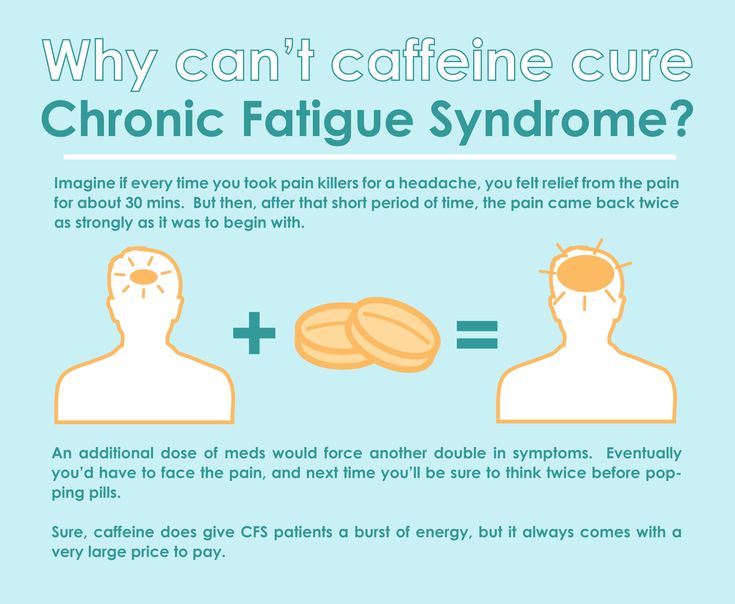
The flu is treated with bedrest, increased fluid intake, and medicines to treat discomfort and fever
Antiviral medicines taken within the first 2 days of illness can reduce the length and severity of the disease but does not cure it.
Getting the flu shot every year is the best prevention.
So you're finally starting to see the light at the end of the flu tunnel. Symptoms like fever, cough, stuffy nose and muscle aches are finally starting to improve, but one thing that hasn't bounced back is your energy. If you're still feeling tired as you recover from the flu, or even if the rest of your symptoms have completely disappeared, know that this is normal. Flu fatigue can last two weeks or more.i Luckily we have some tips on recovering from flu fatigue, so that you can get back on your feet more quickly.
In the past few decades doctors have begun to study the connection between the flu and fatigue experienced during and immediately after recovery. Although they aren't sure why viral illnesses seem to cause this fatigue after flu, some doctors believe it's connected to our bodies' inflammatory response to infection.ii
Although they aren't sure why viral illnesses seem to cause this fatigue after flu, some doctors believe it's connected to our bodies' inflammatory response to infection.ii
Luckily, there are things you can do to help when you're recovering from flu fatigue.
Get plenty of sleep at nightSleeping for at least 7-9 hours every night will help your body continue its recovery. Rest in order to recharge.iii
Take it easyIf you're starting to feel less congested and hoarse but still have a hard time leaving your bed our best advice is not to push yourself too hard. Don't try to return to all of your usual physical activities just yet. Instead, try short walks or very light, brief exercise.iv
Continue to drink lots of fluidsYou might be really tired of drinking broth and tea, but staying hydrated is important all the time,v and especially when you're on the mend.
If you're still recovering from flu fatigue after few weeks be sure to talk to your doctor about it. Doctors can test for other conditions that might be causing your fatigue and recommend treatment options.
Most people are able to manage their flu symptoms in the comfort of their own home with over-the-counter products like those from Theraflu. These folks can expect their symptoms to subside within a week, although a cough may persist longer, sometimes for several weeks. Similarly, post-flu fatigue can last a few days to a few weeks.vi You may feel tired and unable to perform your usual exercise or daily activities, or just be feeling generally down.vii If you are at high risk of flu complications and you start noticing flu symptoms, contact your healthcare provider immediately. Those at high risk of serious flu complications include:
i.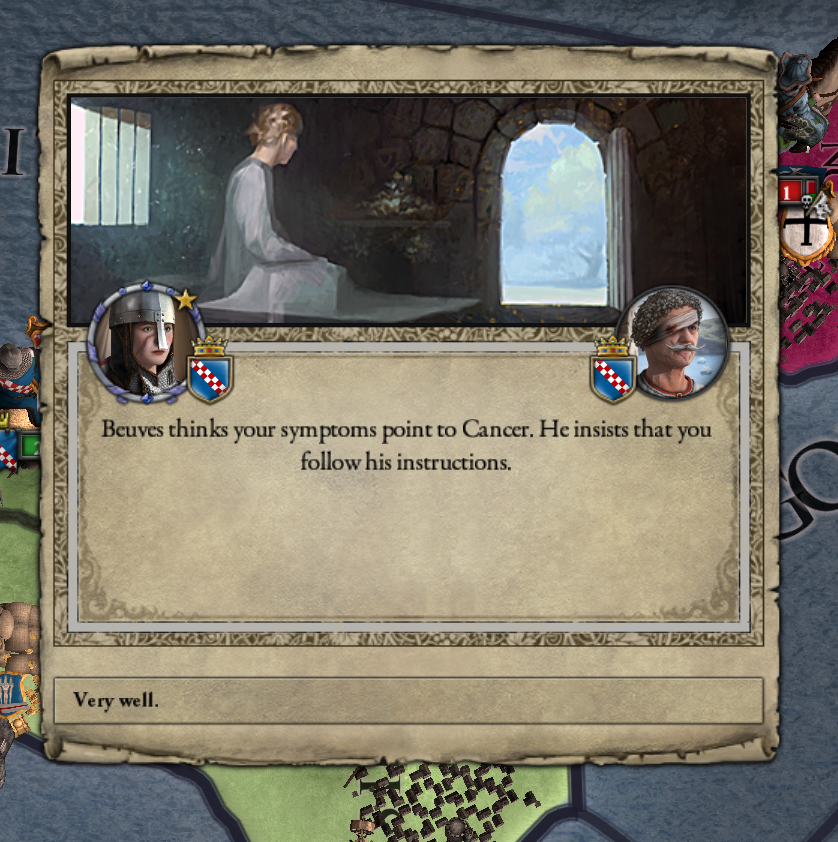 Influenza. Johns Hopkins Medicine. https://www.hopkinsmedicine.org/health/conditions-and-diseases/influenza. Accessed 02 November 2020. Referenced text indicated in red on sourcing doc.
Influenza. Johns Hopkins Medicine. https://www.hopkinsmedicine.org/health/conditions-and-diseases/influenza. Accessed 02 November 2020. Referenced text indicated in red on sourcing doc.
ii. Flu Got You Down Even After You've Recovered? US News & World Report. https://health.usnews.com/health-care/patient-advice/articles/2018-02-28/flu-got-you-down-even-after-youve-recovered. Accessed 26 June 2020.
iii. Ibid.
iv. Ibid.
v. The importance of staying hydrated. Harvard Health Publishing. https://www.health.harvard.edu/staying-healthy/the-importance-of-staying-hydrated. Accessed 26 June 2020.
vi. Ibid.
vii. Flu Got You Down Even After You've Recovered? US News & World Report. https://health.usnews.com/health-care/patient-advice/articles/2018-02-28/flu-got-you-down-even-after-youve-recovered. Accessed 26 June 2020.
viii. Flu Treatment. Centers for Disease Control and Prevention. https://www.cdc.gov/flu/treatment/index.html. Accessed 02 November 2020. Referenced text indicated in red on sourcing doc.
Referenced text indicated in red on sourcing doc.
Weakness after an illness is normal, because the body has spent a lot of energy fighting the infection. But if the feeling of fatigue does not go away even after rest, occurs not only after physical, but also after mental activity, and is also combined with apathy, this is not weakness, but asthenic syndrome 1 . We figured out why it occurs, how to get rid of it and what to do so that it does not arise again. nine0005
The exact cause of asthenic syndrome after infection has not yet been established. But there are several suggestions why weakness appears:
● Inflammation of the brain tissue. The signal about the spread of the infection gets to the brain, which activates immunologically sensitive cells and the release of cytokines - special proteins that help fight the disease.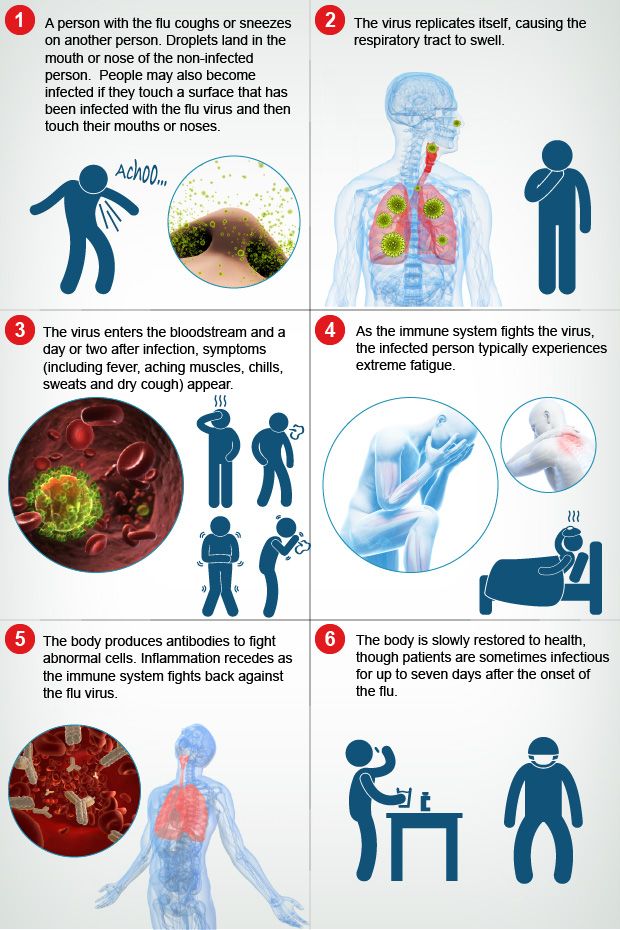 An inflammatory reaction occurs in the brain, provoking asthenia 2 .
An inflammatory reaction occurs in the brain, provoking asthenia 2 .
● Energy deficiency due to hypoxia - lack of oxygen in the blood. Hypoxia appears due to the accumulation of microbial toxins and intoxication with metabolic products, in particular oxidation reactions. Oxygen is absorbed worse by tissues, protein metabolism is disturbed, ammonia accumulates in the blood. This negatively affects the state of the central nervous system - nerve impulses are transmitted more slowly, it becomes more difficult for a person to do mental work and perform ordinary household chores 3 .
In addition, asthenia is also associated with the characteristics of the influenza virus. It suppresses the immune system and directly affects the cells of the nervous system - these features increase the risk of developing asthenic syndrome 4, 5 .
Antiviral drugs are indicated to fight influenza viruses. One of them is the modern preparation Nobasit ® .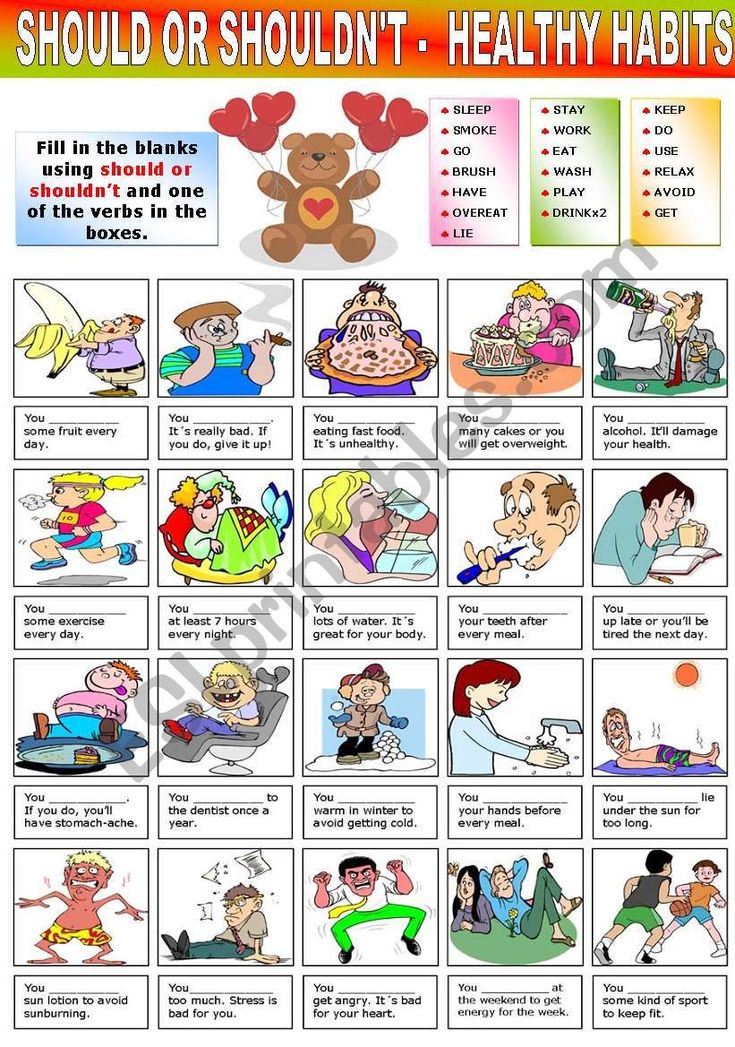 It effectively suppresses the action of influenza viruses and other pathogens of acute respiratory viral infections (ARVI) 6 . Additionally, Nobasit® has an anti-inflammatory effect comparable to that of ibuprofen 7 . It is recommended to start treatment as early as possible - when the first symptoms of the disease appear 6 .
It effectively suppresses the action of influenza viruses and other pathogens of acute respiratory viral infections (ARVI) 6 . Additionally, Nobasit® has an anti-inflammatory effect comparable to that of ibuprofen 7 . It is recommended to start treatment as early as possible - when the first symptoms of the disease appear 6 .
Asthenic syndrome occurs due to the action of infection on brain cells. This is not just a weakness, but a neurological disorder. Problems in the work of the nervous system cause physical and emotional-psychological symptoms. nine0005
Physical symptoms of asthenic syndrome 8 :
● Increased fatigue;
● muscle weakness;
● loss of appetite;
● digestive disorders;
● joint and bone pain;
● nausea;
● abdominal pain;
● tachycardia 9 ;
● pain in the heart;
● excessive sweating;
● decreased libido;
● Menstrual disorders 10 ;
● periodic rise in body temperature.
The main problem of asthenic syndrome is the loss of working capacity. Mental or physical stress worsens a person's condition, which causes anxiety and a feeling of impotence 11 .
Neurological symptoms due to damage to the nervous system 12 :
● headache; nine0005
● Meteorological dependence 13 ;
● heaviness and pressure in the head;
● dizziness;
● severe mood swings;
● tearfulness;
● problems with self-control;
● restlessness and impatience;
● sleep disturbance - insomnia, early awakening or drowsiness, including daytime;
● photophobia;
● intolerance to loud sounds;
● increased sensitivity to touch;
● decrease in memory and attention;
● anxiety.
The most common symptoms are fatigue, which occurs in 58% of patients after influenza, and headache in 44% of patients. Violation of attention and other manifestations are much less common 14 .
Typically, symptoms persist for four weeks to seven months. Duration depends on the severity of the disease 15 .
You can start rehabilitation from asthenic syndrome on your own. If self-help methods do not help, you should consult a doctor - he will prescribe physiotherapy and drugs for recovery.
Physical activity is difficult for patients with asthenia, but it is recommended to start recovery with it. Scientists believe that physical inactivity aggravates the course of asthenia, and studies prove the benefits of treatment with dosed physical activity 16 . Gradually increasing the load, the patient will feel better and restore activity 17 .
It is worth starting the recovery with walking, while monitoring the pulse. There are 3 walking modes:
● Gentle — up to 1 km;
● gentle training - up to 1.5 km;
● Trainer - up to 3 km.
You need to start from the first, gradually moving to higher levels. The mode is changed taking into account well-being and a conversational test:
The mode is changed taking into account well-being and a conversational test:
● if the person speaks a whole sentence easily, the intensity level is low and the walking intensity should be increased;
● if in the second sentence a person has slight shortness of breath, then the level of intensity of walking is chosen correctly;
● In cases where the practitioner can only say one or a few words, the intensity level is high, and it is better to reduce the walking intensity 18 .
In addition, nutrition therapy, i.e. diet therapy, is included. It helps to restore strength after suffering the flu 19 . You need to eat 4-5 times a day.
The diet should be low in calories and high in protein. Fast carbohydrates are excluded from the menu: sugar, confectionery, carbonated drinks and store juices, hot sauces, marinade, canned food and pickles. Vegetables with a large amount of coarse fiber, that is, radishes, radishes, legumes, garlic and horseradish, are also not recommended 20 .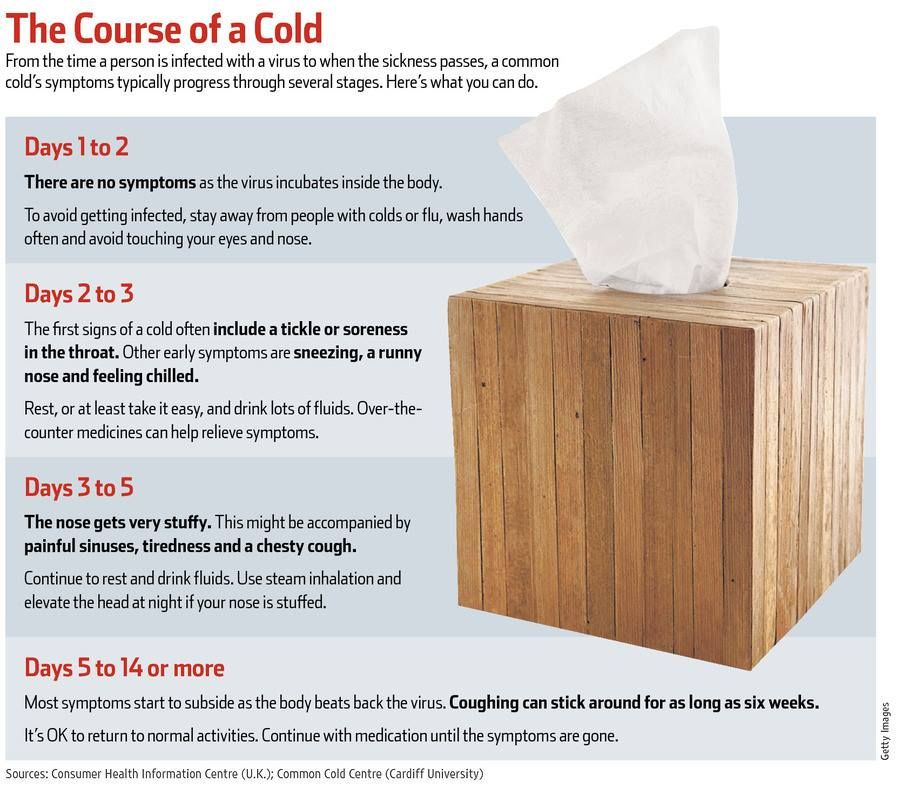
Recommended daily KBZhU for asthenic syndrome:
● 20–30 kcal/kg;
● not less than 0.83 g of protein per 1 kg of weight;
● 80-85 g fat;
● 350-400 g carbohydrates.
It is also important to observe the drinking regimen. It is recommended to drink at least 1.5-2 liters of fluid per day.
Diet therapy and physical activity are recommended to be combined with psychotherapy. It is better to choose cognitive behavioral therapy, as the effectiveness of this method has been proven in clinical trials. It helps people re-motivate and relieve symptoms of fatigue 21 .
In other trials, sensory therapy shows a positive effect. This is an art therapy that combines healing with music, aromas and color. This type of unloading improves the psychological and emotional state, reduces anxiety, eliminates apathy and sleep problems 22 .
Physiotherapy helps to get rid of asthenic syndrome 23 :
● hydrotherapy — swimming, contrast shower, Charcot shower;
● remedial gymnastics; nine0005
● Breathing exercises using respiratory simulators;
● massage;
● acupuncture;
● hyperbaric oxygen - high pressure oxygen breathing 24 ;
● low-frequency, high-frequency pulsed magnetotherapy;
● drug electrophoresis;
● treatment with sinusoidal modulated currents;
● ultrasound therapy;
● laser therapy;
● Normobaric interval hypoxic-hyperoxic training - alternating high and low oxygen breathing 25 .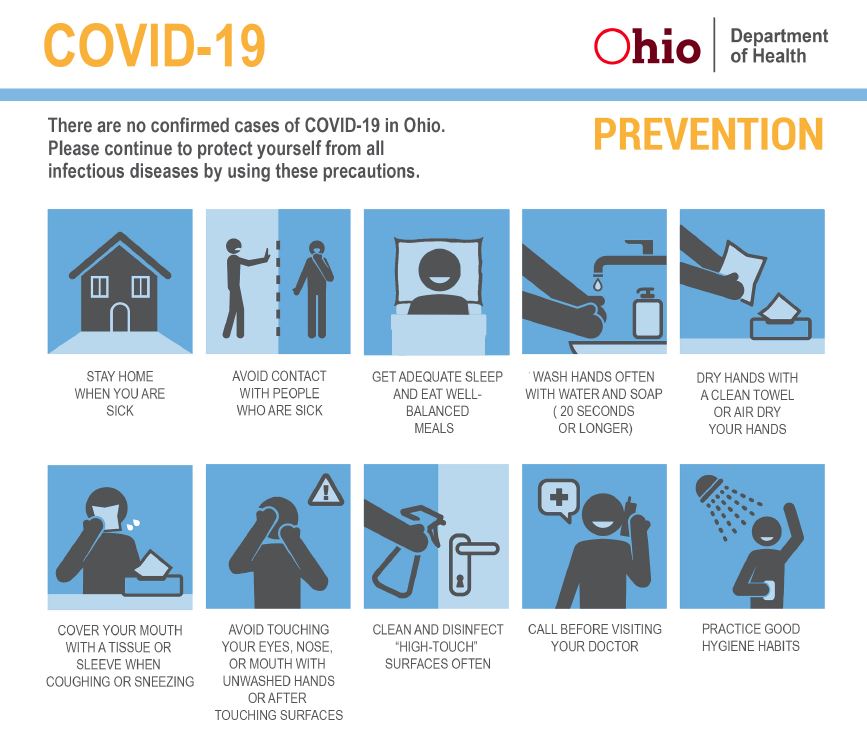
Treatment is carried out within six months after recovery from influenza.
Vitamin therapy is considered separately. According to the study, vitamin D deficiency is often observed in patients with asthenic syndrome. One month after the start of taking 100,000 IU of vitamin D, the symptoms of depression and anxiety become less pronounced 26 . It is also recommended to take vitamin B6 27 , C and P 28 , as well as multivitamins 29 .
Medications are also used to alleviate the symptoms of asthenia:
● acetyl-L-carnitine 30 - a substance that can protect nerve cells from damage and restore them;
● Magnesium preparations 31 ;
● Nootropics - agents that improve brain metabolism 32 ;
● adaptogens - substances that enhance the body's ability to resist stress and toxic substances;
● neuroprotectors — drugs that protect nerve cells from the action of internal and external damaging factors;
● Antioxidants are substances that prevent free radical damage to cells 33 .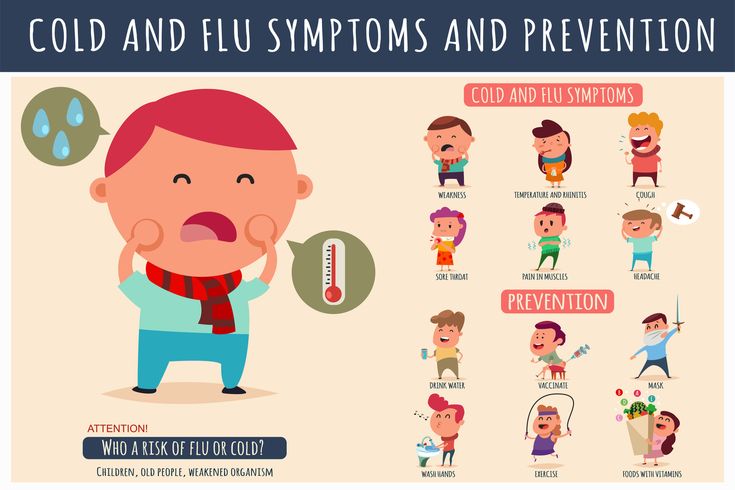
An integrated approach to treatment will help to quickly restore strength and get rid of asthenic syndrome.
The most effective way to reduce the risk of influenza infection is vaccination 34 . General prevention of viral diseases is divided into drug - with the help of drugs, and non-drug - without them.
How to protect yourself from the flu without drugs:
● Treat the air with low doses of ozone using an ozone generator 35 ;
● Ventilate the room regularly 36 ;
● use antiseptics; nine0005
● Wear masks and other personal protective equipment in crowded places.
For more effective prophylaxis during periods of high morbidity, the following preparations are used:
● antiseptics that wash away ARVI pathogens from the nose and throat;
● leukocyte interferons - artificial proteins that work like natural human immune substances, but may cause side effects;
● Interferon inducers 37 - increase the production of your own interferons and increase immunity.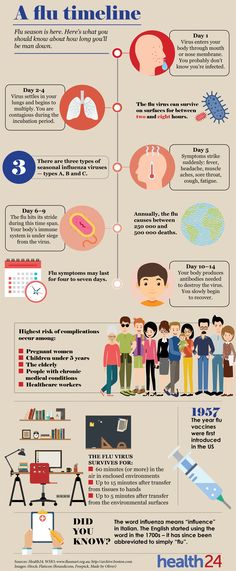 nine0005
nine0005
➢ Asthenic syndrome is a weakness after an illness that does not go away even after rest and comes after mental or minor physical activity.
➢ Asthenic syndrome occurs due to systemic inflammation, reduced immunity, virus damage to brain cells and energy deficiency against the background of hypoxia.
➢ The symptoms of asthenic syndrome are physical, such as fatigue, abdominal and heart pain, as well as neurological, such as dizziness, anxiety, apathy, mood swings, and others. nine0005
➢ To restore strength after an illness, vitamin therapy, diet therapy, physiotherapy and various groups of drugs help.
➢ To prevent SARS and influenza, it is recommended to wear masks, ozonize and regularly ventilate the room. Medical methods of prevention include the use of antiseptics, as well as other drugs - for example, interferons and interferon inducers.
1 Schukin I.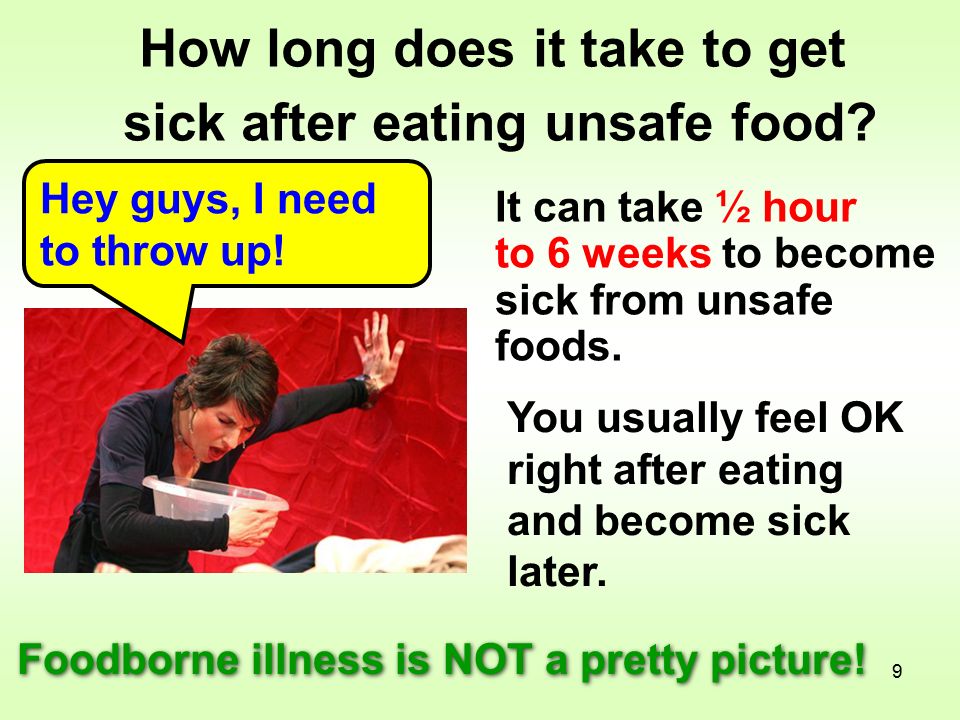 A. Correction of asthenic syndrome. Medical alphabet. The hospital is everything for health care facilities. 2013;4:38-44. nine0005
A. Correction of asthenic syndrome. Medical alphabet. The hospital is everything for health care facilities. 2013;4:38-44. nine0005
2 Yu.D. Vorobieva, G.M. Dyukova Asthenic syndrome in the context of the COVID-19 pandemic. Medical alphabet. Neurology and psychiatry. 2020;33(4): 26-34
3 Ebzeeva E.Yu., Ostroumova O.D., Mironova E.V. Efficacy and safety of Mildronate in post-infectious asthenic syndrome (clinical examples). Medical alphabet. Modern clinic. 2020;2(1): 61-66.
4 Golubovskaya O.A., Gudzenko O.A., Shestakova I.V., Gainutdinova T.I., Levchuk O.O. Post-infectious asthenic syndrome and the possibility of its correction. “Neurology and neurosurgery. Eastern Europe". 2019;9(1):128-136.
5 Bogolepova A.N., Osinovskaya N.A., Kovalenko E.A., Makhnovich E.V. Possible approaches to the treatment of asthenic and cognitive impairments in post-COVID syndrome. Neurology, neuropsychiatry, psychosomatics. 2021;13(4):88–93.
6 Instructions for medical use of the drug Nobasit® LP-003508, Nobasit® Forte LP-006416
7 Zyryanov S.K. Pharmacotherapy of acute respiratory infections caused by influenza viruses: modern possibilities. Therapeutic archive, №1 - 2021
8 Golubovskaya O.A., Gudzenko O.A., Shestakova I.V., Gainutdinova T.I., Levchuk O.O. Post-infectious asthenic syndrome and the possibility of its correction. “Neurology and neurosurgery. Eastern Europe". 2019;9(1): 128-136.
9 Ebzeeva E.Yu., Ostroumova O.D., Mironova E.V. Efficacy and safety of Mildronate in post-infectious asthenic syndrome (clinical examples). Medical alphabet. Modern clinic. 2020;2(1): 61-66.
10 Yu.D. Vorobieva, G.M. Dyukova Asthenic syndrome in the context of the COVID-19 pandemic. Medical alphabet. Neurology and psychiatry. 2020;33(4):26-34.
11 Schukin I.A. Correction of asthenic syndrome. Medical alphabet. The hospital is everything for health care facilities. 2013;4:38-44.
The hospital is everything for health care facilities. 2013;4:38-44.
12 Kotova O.V., Akarachkova E.S. Asthenic syndrome in the practice of a neurologist and a family doctor. breast cancer. 2016;13: 824– 829.
13 Akhapkina V. I., Fedin A. I., Avedisova A. S., Akhapkin R. V. The effectiveness of Phenotropil in the treatment of asthenic syndrome and chronic fatigue syndrome. "Recipe". 2008;5(61):79-84.
14 Bogolepova AN Possible approaches to the treatment of asthenic and cognitive disorders in post-COVID syndrome. Behavioral neuroscience. 2022;1:52-54.
15 Aitbaev K.A., Murkamilov I.T., Murkamilova Zh.A., Fomin V.V., Kudaibergenova I.O., Yusupov F.A. Postcovid syndrome: frequency, clinical spectrum and challenges for the outpatient service. Practical medicine. 2021;19(5):15-20.
16 Ebzeeva E.Yu., Ostroumova O.D., Mironova E.V. Efficacy and safety of Mildronate in post-infectious asthenic syndrome (clinical examples). Medical alphabet. Modern clinic. 2020;2(1): 61-66. nine0005
Medical alphabet. Modern clinic. 2020;2(1): 61-66. nine0005
17 Lane R. Chronic fatigue syndrome: is it physical? J Neurol Neurosurg Psychiatry. 2000 Sep;69(3):289. doi: 10.1136/jnnp.69.3.289
18 Meshcheryakov A.V., Sarsania S.K., Konikova A.A. Adaptation to physical activity of the elderly using dosed walking. Volga pedagogical search (scientific journal). 2020;1(31): 50-57.
19 Ochkolyas MV, Galvas N. Yu., Kharitonenko KA Method of hyperbaric oxygenation in complex treatment and rehabilitation of post-covid syndrome: new experience and achievements. Marine medicine. 2022;8(1):94-98.
20 Marchenkova L.A., Makarova E.V., Yurova O.V. The role of micronutrients in the complex rehabilitation of patients with a new coronavirus infection СOVID-19. Nutrition issues. 2021;90(2): 40–49.
21 Vorobieva Yu.D., Dyukova G.M. Asthenic syndrome in the context of the COVID-19 pandemic. Medical alphabet.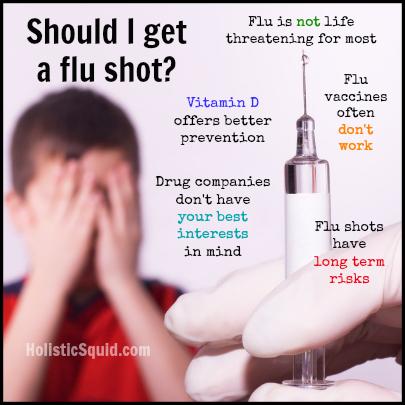 Neurology and psychiatry. 2020;33(4):26-34.
Neurology and psychiatry. 2020;33(4):26-34.
22 Genova N.M., Zakharova I.E. The use of art therapy technologies to overcome the post-COVID syndrome: psychological and pedagogical aspects. International research journal. 2022;6(120):22-25. nine0005
23 Ebzeeva E.Yu., Ostroumova O.D., Mironova E.V. Efficacy and safety of Mildronate in post-infectious asthenic syndrome (clinical examples). Medical alphabet. Modern clinic. 2020;2(1): 61-66.
24 Ochkolyas MV, Galvas N. Yu., Kharitonenko KA Method of hyperbaric oxygenation in complex treatment and rehabilitation of post-covid syndrome: new experience and achievements. Marine medicine. 2022;8(1): 94-98.
25 Bralyuk MA, Akinina Ye. G., Voronova OA Analysis of the results of using normobaric interval hypoxic-hyperoxic training in patients with post-covid syndrome. Chief Physician. 2022;1(82): 37-40.
26 Yu.D. Vorobieva, G.M. Dyukova Asthenic syndrome in the context of the COVID-19 pandemic. Medical alphabet. Neurology and psychiatry. 2020;33(4):26-34.
Medical alphabet. Neurology and psychiatry. 2020;33(4):26-34.
27 ogolepova AN Possible approaches to the treatment of asthenic and cognitive disorders in post-COVID syndrome. Behavioral neuroscience. 2022;1:52-54. nine0005
28 ogolepova AN Possible approaches to the treatment of asthenic and cognitive disorders in post-COVID syndrome. Behavioral neuroscience. 2022;1:52-54.
29 Shishkova V.N., Martynov A.I. New opportunities in the treatment of asthenic symptoms after a new coronavirus infection. Medical advice. 2022;16(6): 24–35.
30 Schukin I.A. Correction of asthenic syndrome. Medical alphabet. The hospital is everything for health care facilities. 2013;4:38-44. nine0005
31 Bogolepova AN Possible approaches to the treatment of asthenic and cognitive disorders in post-COVID syndrome. Behavioral neuroscience. 2022;1:52-54.
32 Kotova O.V., Akarachkova E.S. Asthenic syndrome in the practice of a neurologist and a family doctor. breast cancer. 2016;13: 824– 829.
breast cancer. 2016;13: 824– 829.
33 Vlasova T. I., Spirina M. A., Arsent’eva E. V., Shamrova E. A., Sitdikova A. V. Pathogenetic mechanisms of neurological post-covid syndrome and its basis pathogenetic treatment and prevention (literature review). News of higher educational institutions. Volga region. Medical Sciences. 2021;4:129-141
34 Beloborodov V. B., Kovalev I. A., Sapronov G. V. Topical issues of empirical therapy of severe bacterial community-acquired pneumonia during the season of respiratory viral infections. Antibiotics and chemotherapy. 2020; 65:64-70.
35 A.S. Prilutsky, S.V. Kapranov, K.E. Tkachenko, L.I. Yalovega. Air ozonation for the prevention of bacterial and viral infections. Perm Medical Journal. 2021;38(6): 109-119.
36 Kochetkov P.A., Meitel I.Yu. Prevention and treatment of acute viral infections of the upper respiratory tract and their bacterial complications. breast cancer. Otorhinolaryngology. 2016;4: 231–235. nine0005
2016;4: 231–235. nine0005
37 Kochetkov P.A., Meitel I.Yu. Prevention and treatment of acute viral infections of the upper respiratory tract and their bacterial complications. breast cancer. Otorhinolaryngology. 2016;4: 231–235.
About the product Download instructions
0005
This condition is explained by the fact that in the fight against viruses, the body has suffered significant losses associated with a decrease in immunity, a breakdown in biochemical reactions, and a violation of the functional activity of many organs and systems.
The activity of viruses during the illness caused severe intoxication, which affected the entire body, but especially the nervous system. After recovery, the effect of toxins on the brain is felt for a long time. This is what causes weakness, headaches, poor sleep, and decreased performance. nine0005
Poor health is sometimes due to side effects from medications taken. Thus, the abuse of antipyretic drugs adversely affects the hematopoietic system, liver, and kidneys. The use of antibiotics to combat the complications of influenza leads to dysbacteriosis and deterioration of the entire digestive tract.
Thus, the abuse of antipyretic drugs adversely affects the hematopoietic system, liver, and kidneys. The use of antibiotics to combat the complications of influenza leads to dysbacteriosis and deterioration of the entire digestive tract.
After a viral disease, an asthenic syndrome is formed, with characteristic symptoms: fatigue, excessive irritability, sleep disturbance, memory loss and performance. nine0005
The main causes of post-influenza asthenia:
Fatigue
A persistent symptom that manifests itself in both physical and mental activity. Long breaks are required to perform the usual work, but the feeling of fatigue does not go away even after a long rest.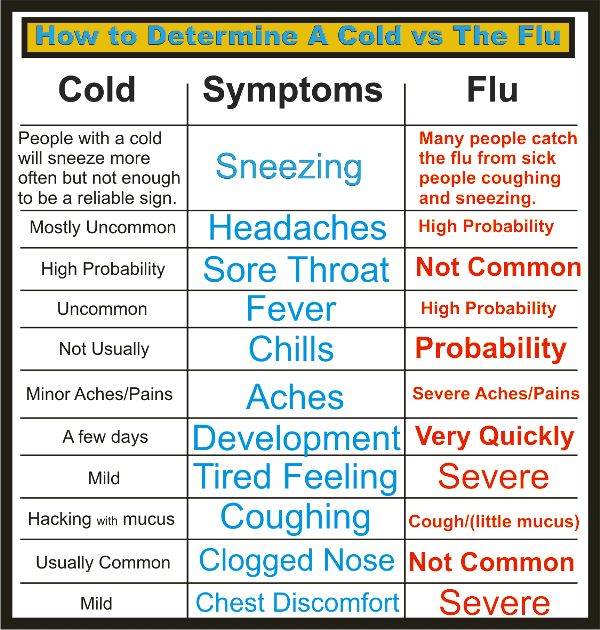 Patients with asthenia are characterized by absent-mindedness, lethargy, they have difficulty in formulating thoughts, memory deteriorates, attentiveness decreases. nine0005
Patients with asthenia are characterized by absent-mindedness, lethargy, they have difficulty in formulating thoughts, memory deteriorates, attentiveness decreases. nine0005
Psycho-emotional disorders
Against the background of a decrease in the productivity of professional activity, the internal anxiety and uncertainty of a person in their own viability increases. Patients are characterized by sudden mood swings: from irascibility to a state of depression, anxiety, apathy.
Autonomic disorders
Asthenia almost always occurs with dysfunctions of the autonomic nervous system. nine0005
Characteristic manifestations:
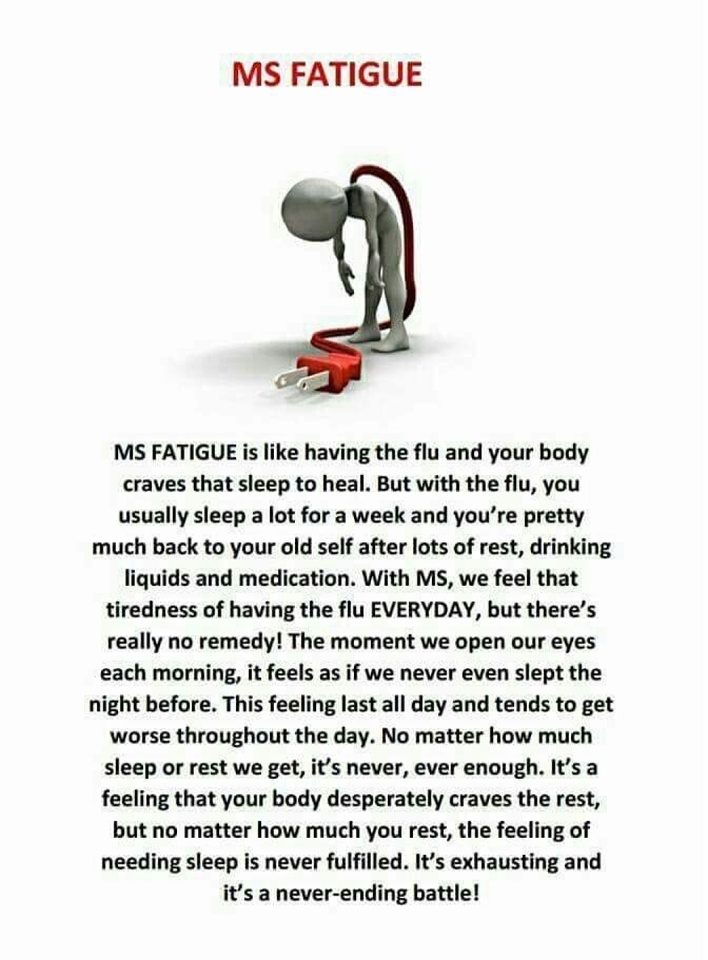
Sleep disorders
Sleep disturbances can manifest as problems falling asleep, nighttime awakenings, nightmares, early waking, which ultimately causes a feeling of exhaustion after sleep.
In order to quickly recover from the flu, you must first of all properly organize the regime of work and rest, sleep and wakefulness, ensure a balanced diet, sufficient exposure to fresh air, as well as psychological comfort in the family and at work. nine0005
Recovery from the flu is more difficult and longer in children due to the immaturity of their immune systems and in older people suffering from chronic diseases.
The main recommendations for restoring the body after a viral infection relate to:
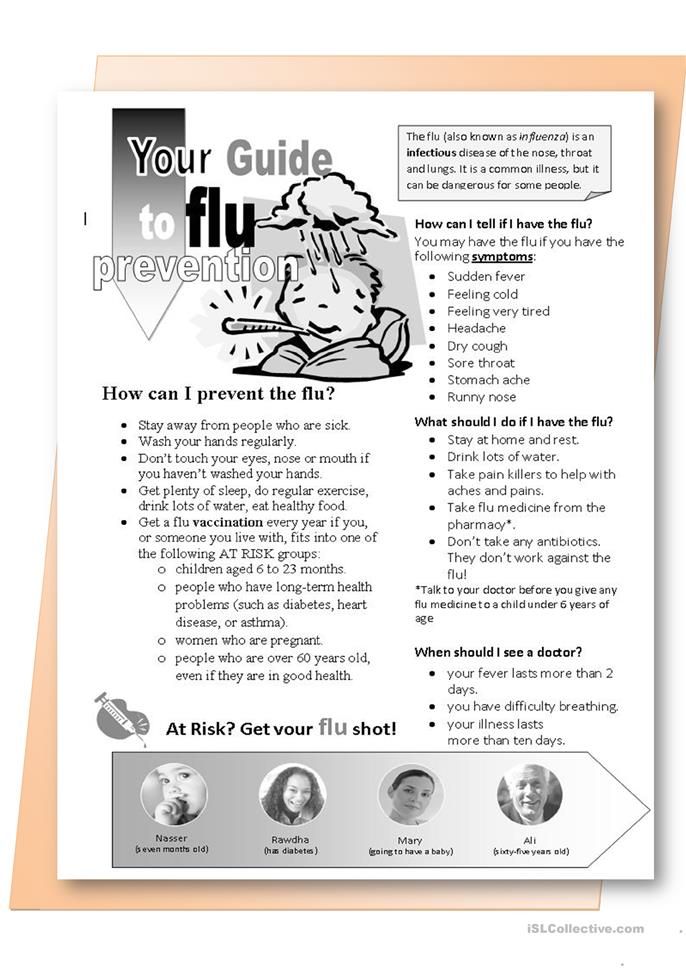
Morning exercise
Every morning you should start with breathing exercises and a light warm-up, which will give you a boost of energy for the whole day.
Gradual increase in physical activity: walking for half an hour in the fresh air has a positive effect on metabolism and accelerates the elimination of toxins. In the future, with good health, you can start training on an abbreviated program. nine0005
Water treatments
Rubbing with cool water, contrast showers, relaxing baths with sea salt, coniferous or herbal infusions, swimming in the pool.
Massage helps to maintain muscle tone, improves the emotional state of a person. Particular attention is paid to foot massage, on which there are a large number of nerve endings and biologically active points, the stimulation of which has a healing effect on the entire body. nine0005
nine0005
For the fastest recovery of the body from the disease, you should give up alcoholic beverages and smoking.
After an illness, the body is exhausted and needs a sparing regime, so it is recommended to gradually join the work rhythm, avoiding overstrain. Give up for a while from an overly active lifestyle, get plenty of rest.
Take breaks at work more often, refrain from conflict situations, avoid communicating with people that are unpleasant for you. nine0005
The most important factor in a quick recovery after suffering the flu is a calm sound sleep. Before going to bed, you should ventilate the room, ensure complete darkness and go to bed no later than 22.00 hours. Extend your nighttime sleep by 1-2 hours.
Since during the illness the patient's appetite was practically absent, few nutrients were supplied to the body, the first days should be fractionally, in small portions, so as not to overload the gastrointestinal tract.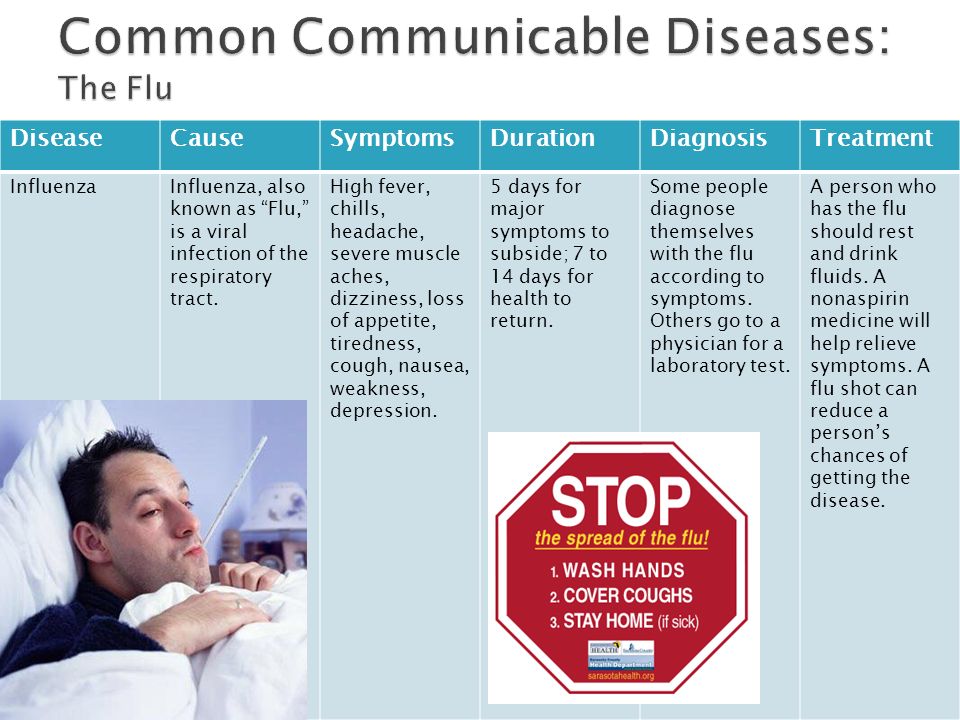 The menu should mainly consist of cereals, mashed soups, boiled meat, low-fat fish, dairy products, fresh fruits and vegetables. It is recommended to give up fatty, fried, starchy foods, sweets, as these foods are difficult to digest and assimilate. nine0005
The menu should mainly consist of cereals, mashed soups, boiled meat, low-fat fish, dairy products, fresh fruits and vegetables. It is recommended to give up fatty, fried, starchy foods, sweets, as these foods are difficult to digest and assimilate. nine0005
It is very useful to include in the diet of a person recovering from a serious illness, foods rich in the amino acid tryptophan: bananas, rabbit meat, turkey, cheese, red caviar, nuts, halva, grain bread.
The participation of tryptophan in the synthesis of the hormones serotonin and melatonin has been proven. Serotonin is considered the hormone of joy, happiness and activity, and melatonin is the strongest antioxidant responsible for sleep, rest, and body recovery.
To normalize energy metabolism, the body needs minerals such as iron, calcium, magnesium, manganese, selenium, phosphorus. nine0005
To enhance metabolic processes, fermented milk products (yogurt, kefir, sour milk) containing enzymes should be consumed.
In addition to a balanced diet during the recovery period, it is necessary to conduct a detoxification course in order to cleanse the body of the waste products of viruses, dead leukocytes and destroyed epithelial cells, which decay and continue to poison the body.
You can get rid of toxins with alkaline mineral water, herbal teas, rosehip decoctions, compotes from cranberries, currants, lingonberries. nine0005
During illness, dehydration of the body occurs due to high temperature, rapid breathing, increased sweating. To replenish the lost fluid, the daily volume of water is increased to 2 liters, which is drunk in equal portions during the day between meals.
An adequate drinking regime will help to cope with the residual effects of intoxication, restore the acid-base balance in the body and quickly normalize the functioning of the liver and kidneys.
After the flu, the body experiences an acute vitamin deficiency.
A weakened body needs the following essential vitamins:
Vitamin C is a strong antioxidant, boosts immunity, participates in metabolism, improves overall tone and performance. It is found in black currants, rose hips, bell peppers, citrus fruits and many other fresh vegetables and fruits.
Vitamin A helps to restore the epithelial cells of the respiratory tract damaged by the virus, takes part in the synthesis of hemoglobin. A lot of vitamin A in the liver, eggs, sour cream, cheese, orange and red vegetables (carrots, pumpkin, peppers). nine0005
B vitamins enrich brain cells with oxygen and energy, normalize metabolic processes, and reduce fatigue. They enter the body along with offal (liver, kidneys), buckwheat and oatmeal, rye bread, bran, eggs, dairy products, but they are practically absent in fruits and vegetables.
Vitamin D is involved in the synthesis of the hormone melatonin, which is necessary for normal sleep. The champion in the content of vitamin D is cod liver, followed by fatty sea fish, egg yolk, butter, cheese.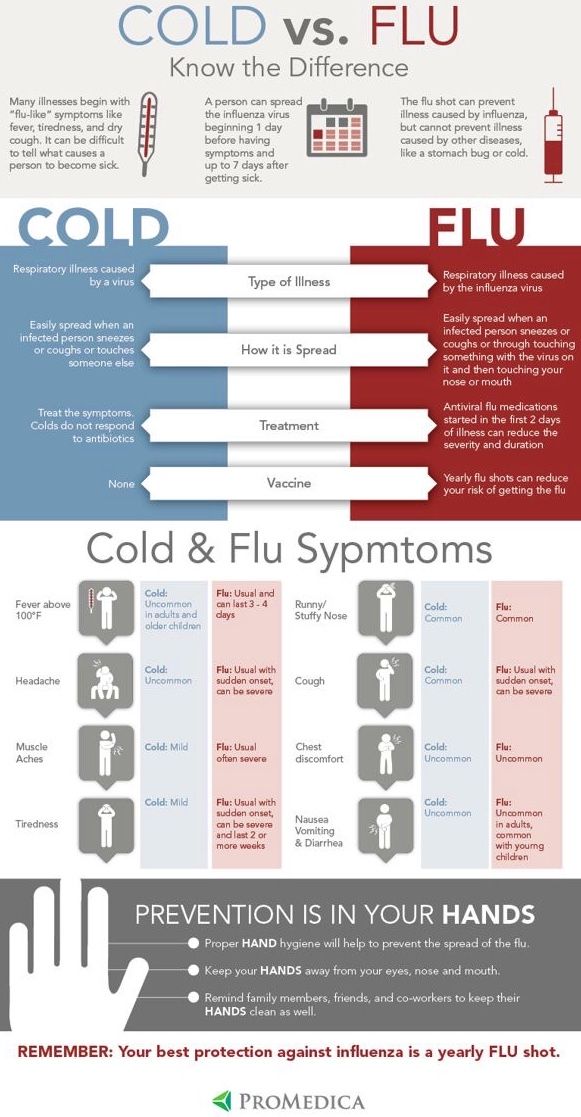 nine0005
nine0005
Freshly squeezed vegetable and fruit juices are also useful.
It is desirable to receive vitamins from natural products. As for the use of tableted vitamin complexes, they can be used only after the permission of the doctor.
Influenza often acts as a catalyst for those pathological processes that have already been hidden in the body. This property of the virus explains the development of new diseases after influenza or the exacerbation of chronic ones. In such cases, treatment is carried out by specialized specialists. nine0005
In the arsenal of traditional healers, many recipes have been accumulated to combat the effects of colds and flu.
In the first place is, of course, honey. If there is no allergy to honey and other bee products (royal jelly, perga, propolis), it is used as an immunostimulating agent.
To restore sleep, to relieve emotional stress, decoctions and infusions based on sedative medicinal herbs are used: chamomile, valerian, motherwort, St.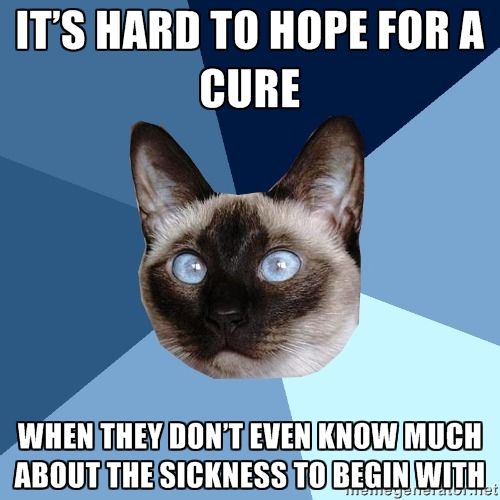 John's wort, sage. nine0005
John's wort, sage. nine0005
Natural adaptogens will help strengthen the immune system: ginger, echinacea, rhodiola, eleutherococcus, Chinese magnolia vine, ginseng root. They increase physical and mental performance, increase cell energy, increase stamina and improve mood.
Consequences in the form of complications most often develop after untreated influenza, when the course of the disease was relatively mild, and the person endured it, which is called “on his feet”. Against the background of immunity weakened by a viral infection in the early rehabilitation period, symptoms may appear that indicate complications caused by the bacterial flora. nine0005
If during the recovery period after the flu, the temperature rises again, there are chest pains, a painful cough with shortness of breath, impaired urination, nosebleeds, severe headaches, accompanied by nausea and vomiting, this is a reason to immediately seek medical help.
A person who has had the flu develops specific immunity, but only to the strain (type) of the virus that caused the disease.